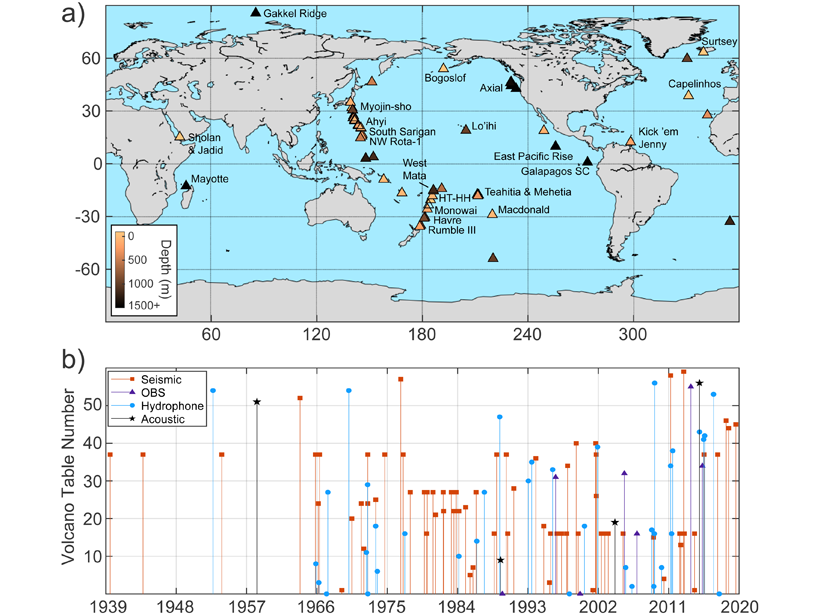Source: Journal of Geophysical Research: Solid Earth
The seismic and acoustic signals generated by active volcanoes are critical, both for modeling volcano physics and for providing eruption forecasts and early warnings. While most of the Earth’s lava is erupted under the oceans, much of what we have learned about eruptions has come from volcanoes on land.
Tepp and Dziak [2021] review the rich literature on submarine eruptions and associated earthquakes and landslides that have been recorded with seismometers, hydrophones, and infrasound sensors in a paper that should promote much more work on submarine volcanism in the future.
In addition to documenting the signals associated with a number of phenomena, they describe ocean path effects that may be unfamiliar to those used to working on subaerial volcanoes. They describe the current state of submarine instrumentation and highlight technological advances that will facilitate new studies. Finally, they highlight the state of knowledge and outstanding questions about submarine volcanism. This paper should serve as a reference for both marine geophysicists and an introduction to submarine volcanism for those new to the field.
Citation: Tepp, G., & Dziak, R. P. [2021]. The seismo‐acoustics of submarine volcanic eruptions. Journal of Geophysical Research: Solid Earth, 126, e2020JB020912. https://doi.org/10.1029/2020JB020912
—Greg Waite, Associate Editor, JGR: Solid Earth
Text © 2021. The authors. CC BY-NC-ND 3.0
Except where otherwise noted, images are subject to copyright. Any reuse without express permission from the copyright owner is prohibited.

